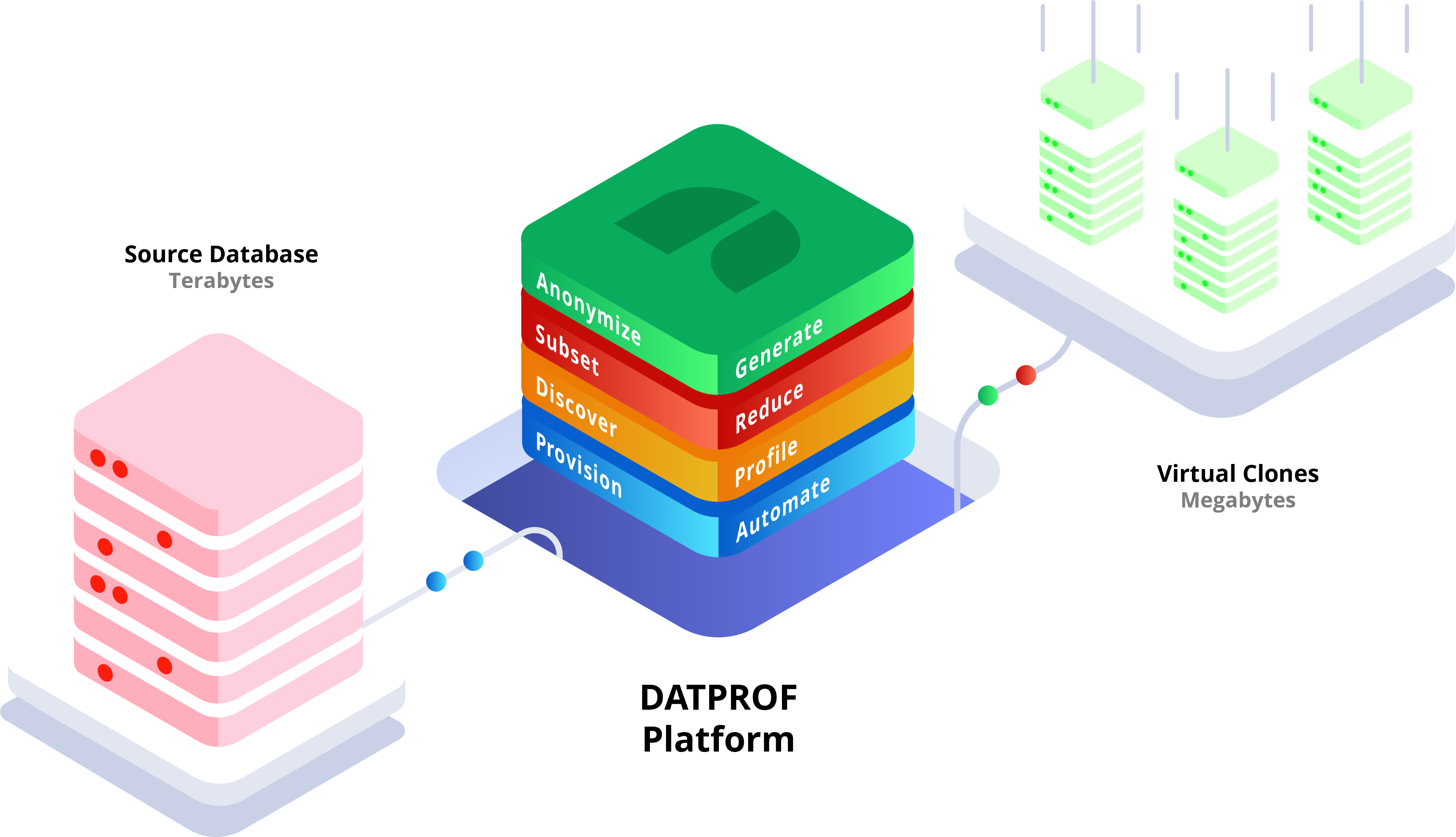Database virtualization
Written by Bert Nienhuis
You surely know firsthand the challenges of working with databases. They can be massive, complex, and difficult to access and manage. It’s not uncommon to spend hours or even days trying to locate a single piece of data, let alone manipulate or analyze it. And with the amount of data being generated and collected today, these challenges are only becoming more pronounced.
Another challenge is the need for test data, including maintaining data privacy, ensuring data quality, and optimizing performance. Creating realistic testing data that accurately represents production data can be a time-consuming and error-prone process when handling large db’s.
Fortunately, there’s a solution to these problems: database virtualization. In this article we’ll tell you all about it.
What is Database Virtualization?
This technology allows you to create virtual copies of your databases. These virtual copies are separate from the actual db’s and allow users to work with them in a safe and isolated environment.
You can make changes, test them, and run simulations without affecting the source. Make a snapshot of the data at a particular point in time, store it as a separate version, and easily roll back to a previous version if needed. Virtual copies are much smaller and more manageable than the original databases. Therefore, you can work with them much more efficiently.

Data virtualization vs. database virtualization
Data virtualization and database virtualization are two related but distinct concepts in the world of (test) data management. While both techniques involve creating virtual copies of data, they differ in their scope and purpose. Database virtualization involves creating virtual copies of the entire database content, while data virtualization involves creating virtual views of data from multiple sources, such as db’s, data warehouses, and other data repositories. In other words, database virtualization focuses on the management and testing of databases, while data virtualization focuses on the integration and analysis of data from multiple sources. Both techniques have their own unique benefits and use cases, and organizations may choose to use one or both depending on their specific data management needs.
Benefits of Database Virtualization
Database virtualization is useful for data architects, developers, QA engineers, DBA’s, and other IT business professionals and software specialists. It can be useful for organizations of all sizes and industries, from small startups to large enterprises. Any organization that generates and manages large amounts of data can benefit from database virtualization solutions.
The benefits of database virtualization are numerous. Some of the key benefits include:
Increased efficiency
With database virtualization, users can work more efficiently by creating virtual copies of their databases and working with them in a safe and isolated environment.
Improved data quality
Database virtualization allows users to have realistic test data that accurately represents their production data. This means they can test their systems more thoroughly and catch errors before they impact their production environment.
Cost savings
By streamlining their development and testing processes, organizations can save time and money. They can develop and test their applications more quickly and accurately, which can lead to faster time-to-market for their products and services.
Conclusion
At DATPROF, we understand the importance of managing and working with test data effectively. That’s why we’re excited to be working on a new product in our Test Data Platform called DATPROF Virtualize. With this solution, you’ll be able to provide virtual clones of your data source quickly and easily, and manage them with greater confidence and efficiency. You can even use DATPROF Virtualize to create (anonymized) subsets of your databases for testing and development purposes. Save on storage and stop risking the integrity of your production data.
So if you’re tired of struggling with massive, complex databases, it’s time to give database virtualization software a try. With DATPROF Virtualize’s capabilities, you can work smarter, faster, and with greater confidence than ever before.
Book a demo
Schedule a product demonstration with one of our TDM experts.
✓ One-on-one expert session
✓ 45-minute live tour
✓ Full platform demonstration
Book a demo
"*" indicates required fields
About the writer
Bert Nienhuis has been working on test data management solutions for over 14 years. He is the driver and inventor of DATPROF’s software solutions in their current form. By looking at what is going on with customers, he comes up with smart solutions for every test data problem.

